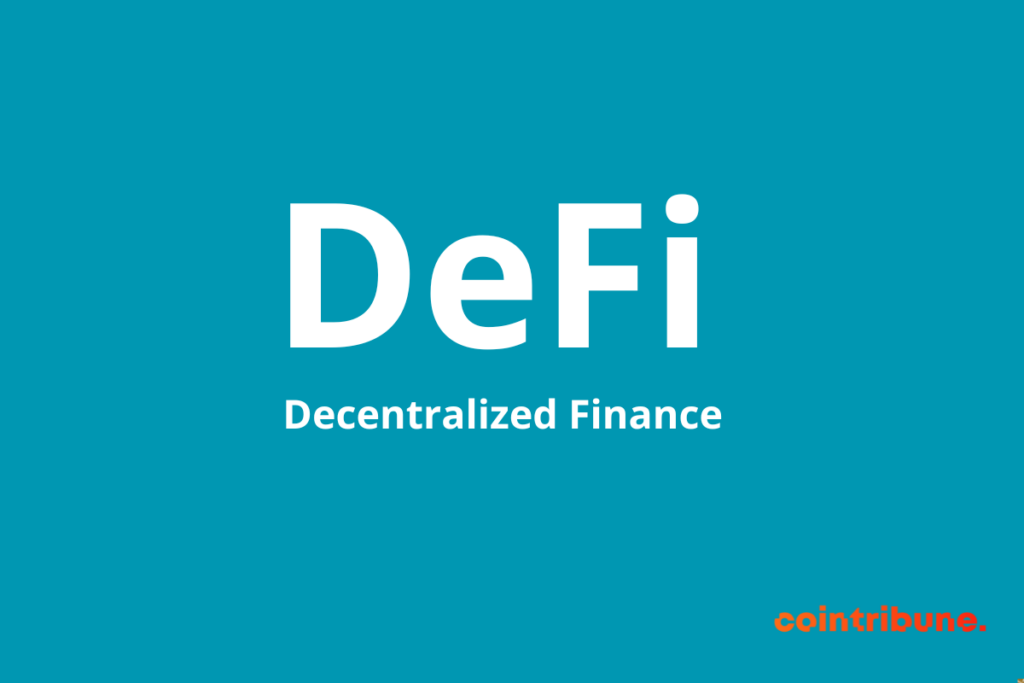Where Do DeFi Yield Farming Profits Really Come From?
Many DeFi protocols offer impressive and especially impossible returns in the banking system. These two or three-digit returns lead many users to believe that DeFi is the kingdom of easy money. To avoid being disappointed or even losing money, it is important to understand where these returns come from. It is crucial to keep in mind that there is no magic money. The Luna disaster, which has one of its distant origins in the exaggerated yield of Anchor for stablecoin, should make us aware of this statement and bring us back to reality.

- Why reward those who participate in protocols?
- The two sources of rewards from farming
- Can DeFi do without yield farming?
The staking of cryptocurrencies, the typical example of possible returns
Before understanding why yield farming protocols offer such high returns, it is also necessary to understand why we can and must consider returns. In fact, the functioning of the blockchain ecosystem relies on decentralization. Therefore, it needs community participation to function sustainably. The simplest case to understand, even though it is not related to yield farming, is that of staking in blockchains that use proof of stake. For the security of the blockchain, validators as well as delegators must stake their tokens. However, tokens from staking can often only be withdrawn after a more or less long period of time, which makes it impossible to sell them quickly.
But in exchange for this staking, validators and delegators receive rewards. However, on many blockchains, the returns from staking are accompanied by an increase in the number of tokens in circulation. Therefore, this inflation, which could gradually dilute the capitalization, must be taken into account. Moreover, these returns are not fixed. What is fixed is the continual creation of tokens. The more tokens staked, the lower the returns will be, since there will always be the same number of tokens to distribute.
DeFi chained to liquidity providers
The same issues arise in yield farming. DeFi protocols need the community to operate exchanges. Users of these protocols must deposit liquidity themselves to enable swaps. However, this liquidity always works in pairs of tokens and carries the risk of impermanent loss. Indeed, if the tokens do not vary in the same direction and proportion, the liquidity pool is less advantageous than keeping these tokens separately. Thus, the returns offered by these protocols serve both to incentivize liquidity deposits and to compensate for the risk of impermanent loss.
The swap is made possible by farming: The deadlock of DeFi
Once we are aware of what motivates DeFi protocols to offer returns, we must now understand their origin. In fact, it is twofold. Part of it comes from transaction fees collected by the protocol. Users earn this part as soon as they place their tokens in liquidity pools without having to use farming. However, the returns would then be insufficient to offset impermanent loss. The other source of returns is the farming itself. In this case, the protocol distributes its token to those who deposit liquidity.
However, it is important to be aware of two things. What is predetermined is the distribution rate. Therefore, the more people who deposit liquidity, the lower the returns will be. Additionally, the distributed tokens only have the value the market gives them. Returns are calculated based on the token’s price at listing. However, since the protocol distributes these tokens “for free,” there is a massive resale of these tokens, which causes their value to drop, and thus the return. We can see this with PancakeSwap (CAKE), which is one of the most symbolic tokens of yield farming, that these tokens are doomed to lose their value.
The new solutions of DeFi
Once we understand the economy of yield farming, it is difficult to be optimistic about its viability. The tokens of each protocol see their price decrease. As a result, users are less and less incentivized to hold them. Decentralized finance must therefore transform its economy. We must find mechanisms that allow for liquidity without multiplying the number of worthless tokens. In fact, DeFi is gradually transforming since the innovations that have emerged on the Curve protocol. This protocol has implemented veTokens. Those who own the protocol’s tokens and lock them for varying lengths of time receive a portion of the transaction fees and can choose to boost a particular pool. An increasing number of protocols are using this mechanism, including Lifinity on Solana.
This protocol has chosen to do the opposite of classic farming. It sold its token at the launch of its DEX. Those who lock the token will receive a portion of the transaction fees. The protocol then used the money from the sale of its token to provide liquidity for the protocol. This means that here, Lifinity owns the liquidity, and since its token allows for a return, the holders are not incentivized to sell it.
As alluring as they may be, the returns offered by DeFi protocols should not blind us. Since there is no magic money, we need to understand the risks present in this type of investment. Not only can the liquidity provided lose its value, but the tokens given as rewards for farming may also no longer hold the expected value. Therefore, one must remain both cautious and clear-headed when faced with these protocols.
Maximize your Cointribune experience with our "Read to Earn" program! For every article you read, earn points and access exclusive rewards. Sign up now and start earning benefits.
The Cointribune editorial team unites its voices to address topics related to cryptocurrencies, investment, the metaverse, and NFTs, while striving to answer your questions as best as possible.
The views, thoughts, and opinions expressed in this article belong solely to the author, and should not be taken as investment advice. Do your own research before taking any investment decisions.